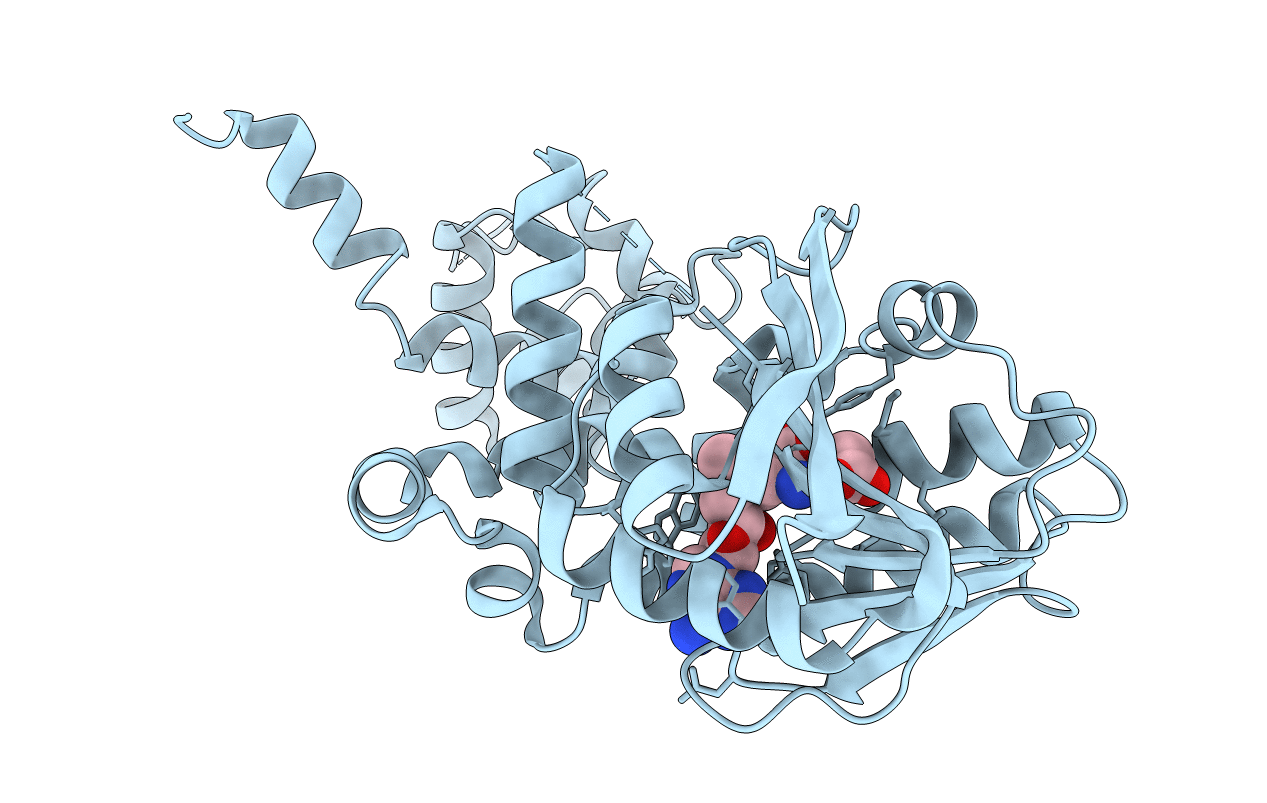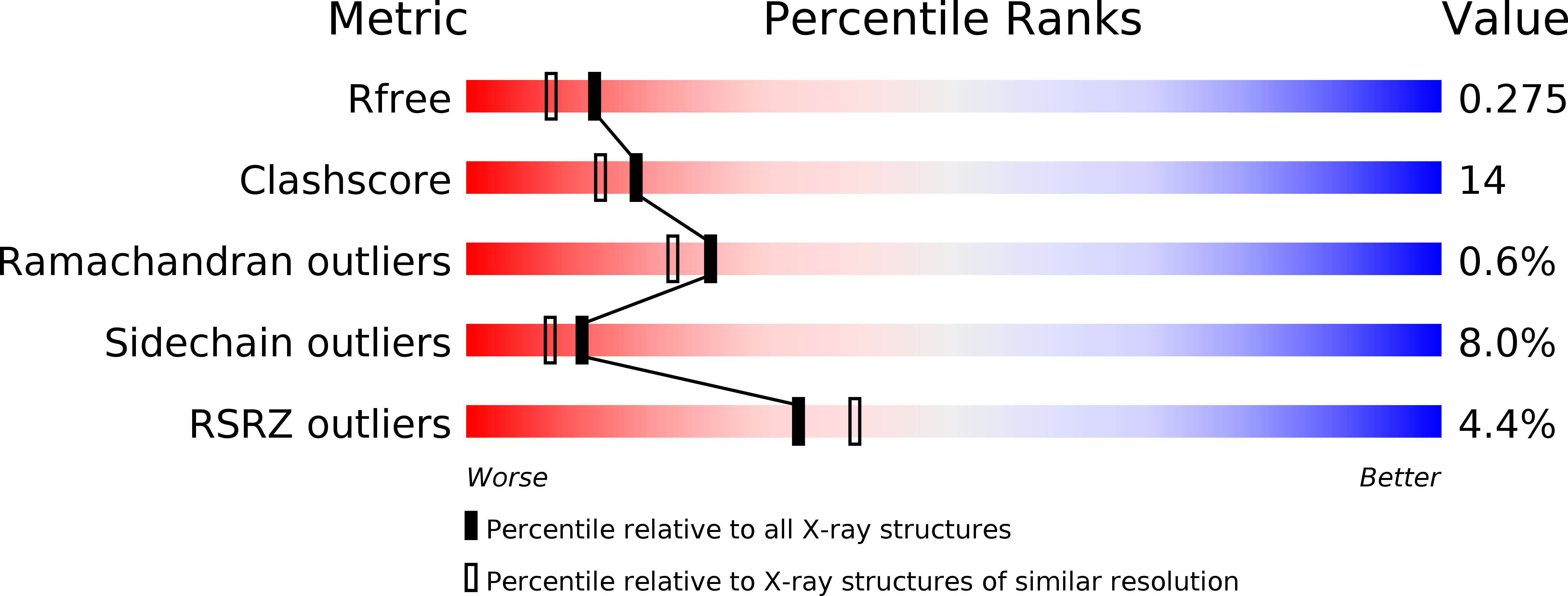
Deposition Date
2003-09-19
Release Date
2003-11-25
Last Version Date
2024-02-14
Entry Detail
PDB ID:
1QZZ
Keywords:
Title:
Crystal structure of aclacinomycin-10-hydroxylase (RdmB) in complex with S-adenosyl-L-methionine (SAM)
Biological Source:
Source Organism:
Streptomyces purpurascens (Taxon ID: 1924)
Host Organism:
Method Details:
Experimental Method:
Resolution:
2.10 Å
R-Value Free:
0.27
R-Value Work:
0.20
R-Value Observed:
0.21
Space Group:
C 2 2 21


